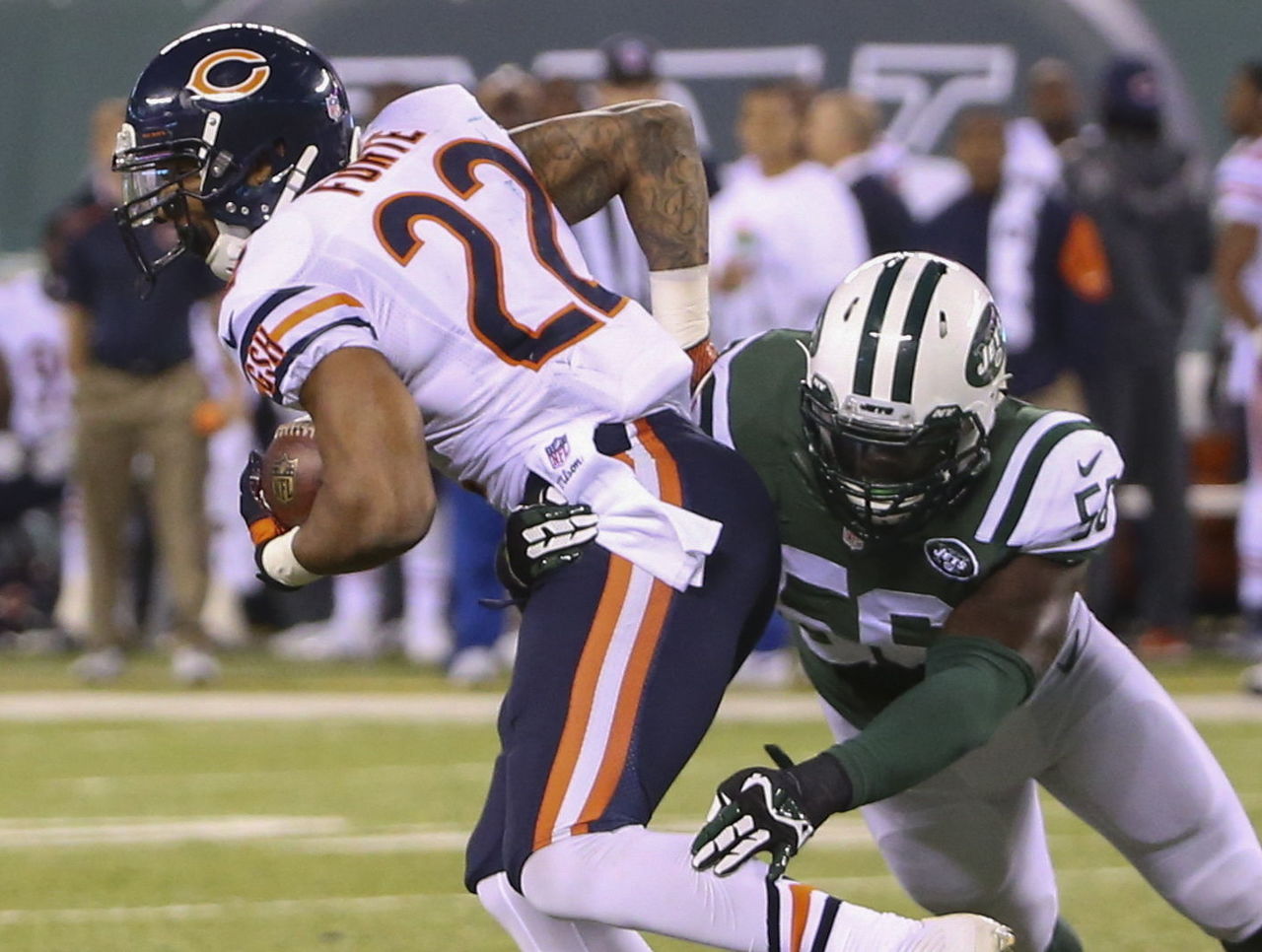Basic NFL DFS Strategy: Examining the Dual-Threat Running Back
Daily fantasy scoring rewards the aerial game.
With points awarded for receptions, the majority of elite quarterbacks, wide receivers, and tight ends provide more bang-for-your-buck than running backs. This was certainly the case in 2014, where running backs provided just seven of the top-40 DFS performances of the season.
For running backs, scoring is critical; a wide receiver can rack up 12 catches for 120 yards without a score and still prove to be a solid daily fantasy pick, but rush-focused running backs who don’t break the plane are DFS poison - particularly in guaranteed prize pools.
Enter the pass-catching running back - the one backfield weapon that not only increases his chances of scoring a TD, but also adds critical receiving stats that can mean the difference between doubling your money and earning enough scratch for a trip to Bora Bora.
Here’s a look at the seven performances by running backs that landed in the top 40; take note that the majority saw their results bolstered by strong showings in the passing game:
1) Le’Veon Bell, Pittsburgh Steelers (Dec. 7)
26 ATT, 185 YDS, 2 TD; 6 REC, 50 YDS, TD
2) Jonas Gray, New England Patriots (Nov. 16)
37 ATT, 201 YDS, 4 TD
3) Marshawn Lynch, Seattle Seahawks (Nov. 9)
21 ATT, 140 YDS, 4 TD; 1 REC, 23 YDS
4) Le’Veon Bell, Pittsburgh Steelers (Nov. 30)
21 ATT, 95 YDS, TD; 8 REC, 159 YDS
5) Arian Foster, Houston Texans (Oct. 26)
20 ATT, 151 YDS, 2 TD; 4 REC, 22 YDS, TD
6) DeMarco Murray, Dallas Cowboys (Dec. 4)
32 ATT, 179 YDS, TD; 9 REC, 49 YDS
7) Tre Mason, St. Louis Rams (Nov. 30)
14 ATT, 117 YDS, 2 TD; 3 REC, 47 YDS, TD
And that doesn’t include any performances by Matt Forte, who added significant DFS value while finishing with 102 receptions for 808 yards and four touchdowns through the air.

Every tournament roster you submit should have at least one dual-threat running back on it - and if you get creative with your finances, you might find a way to end up with two. Here are the biggest benefits to doing so:
1) All they need is one big catch. A quick glance at Andre Ellington’s rushing line from last Oct. 5 against Denver (16 ATT, 32 YDS, TD) shows an uninspiring effort. But Ellington also had four catches for 112 yards, including an 81-yard TD grab that undoubtedly vaulted his owners into the money. One big grab is all a running back needs to turn an okay day into a great one.
2) They don’t have to excel at both. The beauty of selecting Forte on a regular basis is that owners didn’t need him to compile 200 all-purpose yards to be a solid pick. Forte had just three 100-yard rushing games in 2014, but caught at least five passes in all but two contests. So even if he struggled on the ground, his role in the passing game lifted his floor above most others’.
3) Their workloads are enormous. Running backs who rush and catch the ball well are going to see the field a lot. They’re weapons on every down, unlike non-pass-catchers who are often replaced on third downs in favor of short-yardage run specialists or pass blockers. Dual-threat backs also tend to see the majority of goal-line work for their teams.
Yet, despite the overwhelming evidence in support of a dual-threat RB, there are a few factors you’ll need to consider before constructing your roster:
1) You’ll pay for those extra yards. Dual-threat RBs will always be among the highest-priced options at the position, so making room for them will involve some roster creativity on your part. Attempting to fit more than one on your roster may leave you critically short in other areas, so exercise caution and be willing to trim down to one if need be.
2) Don’t expect to find many contrarian options. So you’ve found a way to roster both Le’Veon Bell and Matt Forte. Congratulations! A lot of other players did, too. So while that dual-threat rusher will likely have a high floor and ceiling, he’ll likely have a high ownership percentage, as well. Plan accordingly by making solid contrarian picks at other positions.
3) A great receiver is still more valuable. Receivers posted 24 of the 40 best DFS showings last season, a stark indication that the WR position is far and away the most important. The dual-threat RB may have a higher floor due to workload predictability, but an elite receiver will almost always have a greater upside - and often at a lower cost.
As a general rule, players should strongly consider adding a dual-threat RB to the mix - but one should almost always suffice. Pairing him with a high-upside, cost-effective run-first RB should allow you to load up on an elite QB and capable WRs in a 9-man game; the tactic is less effective for 3- or 5-man rosters, since the dual-threat RB will absorb more of the salary cap and make filling out the rest of the team more challenging.